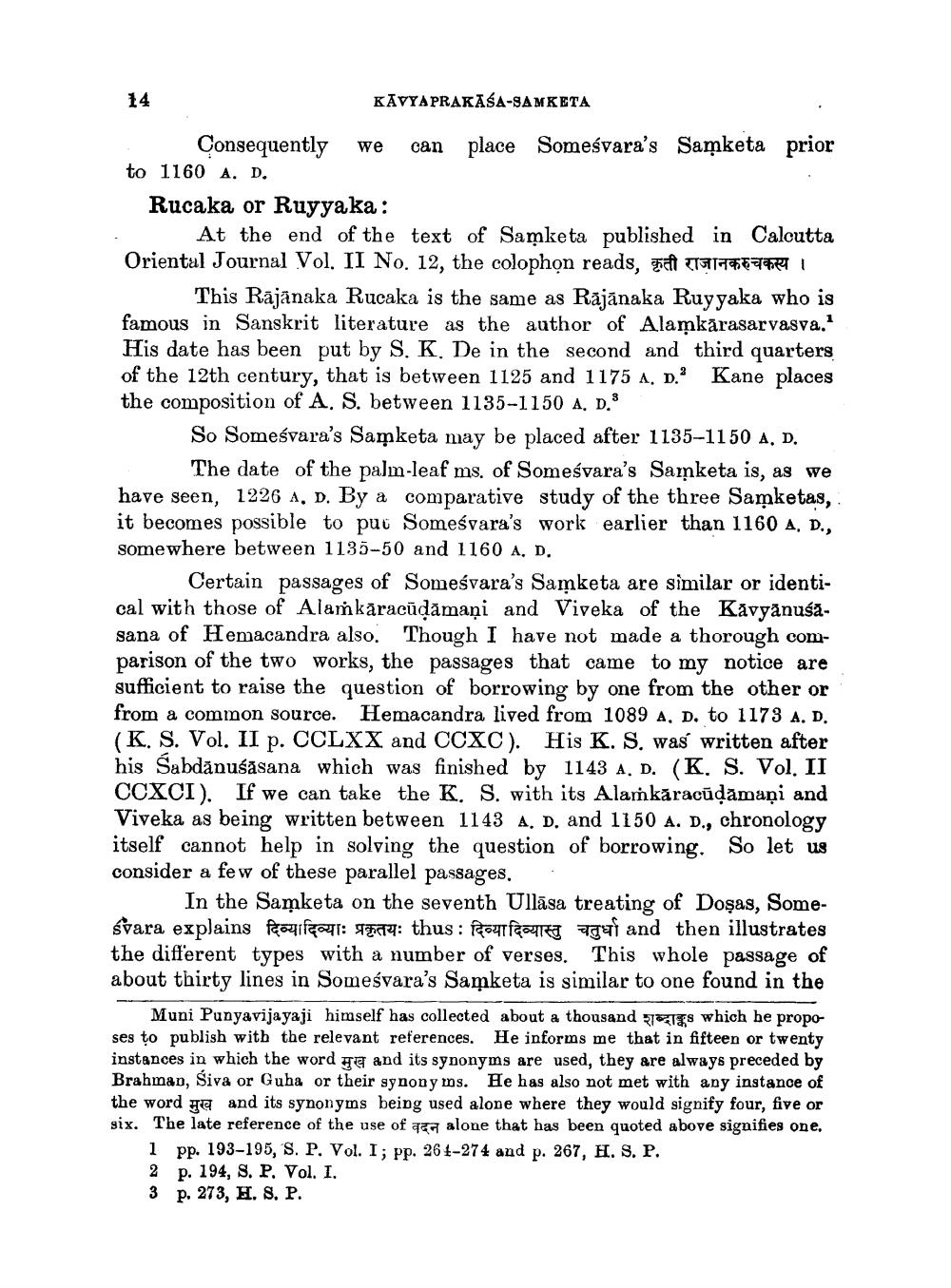________________
14
KĀVYAPRAKĀŚA-SAMKETA
. Consequently we can place Someśvara's Saņketa prior to 1160 A. D. Rucaka or Ruyya ka:
At the end of the text of Samketa published in Calcutta Oriental Journal Vol. II No. 12, the colophon reads, wat 7911795er !
This Rajanaka Rucaka is the same as Rajānaka Ruyyaka who is famous in Sanskrit literature as the author of Alamkārasarvasva. His date has been put by S. K. De in the second and third quarters of the 12th century, that is between 1125 and 1175 A, D.' Kane places the composition of A. S. between 1135-1150 A, D3
So Someśvara's Samketa may be placed after 1135-1150 A. D.
The date of the palm-leaf ms. of Someśvara's Samketa is, as we have seen, 1226 A, D. By a comparative study of the three Samketas, it becomes possible to put Someśvara's work earlier than 1160 A, D., somewhere between 1135-50 and 1160 A, D.
Certain passages of Someśvara's Samketa are similar or identical with those of Alamkaracūdāmaņi and Viveka of the Kávyānusasana of Hemacandra also. Though I have not made a thorough comparison of the two works, the passages that came to my notice are sufficient to raise the question of borrowing by one from the other or from a common source. Hemacandra lived from 1089 A. D. to 1173 A. D. (K. S. Vol. II p. CCLXX and CCXC). His K. S. was written after his Sabdănuśasana which was finished by 1143 A. D. (K. S. Vol. II CCXCI). If we can take the K. S. with its Alamkāracūļāmaņi and Viveka as being written between 1143 A. D. and 1150 A. D., chronology itself cannot help in solving the question of borrowing. So let us consider a few of these parallel passages.
In the Samketa on the seventh Ullāsa treating of Doşas, SomeSvara explains दिव्यादिव्याः प्रकृतयः thus : दिव्यादिव्यास्तु चतुर्धा and then illustrates the different types with a number of verses. This whole passage of about thirty lines in Someśvara's Samketa is similar to one found in the
Muni Punyavijayaji himself has collected about a thousand 571 which he proposes to publish with the relevant references. He informs me that in fifteen or twenty instances in which the word ge and its synonyms are used, they are always preceded by Brahman, Siva or Guha or their synonyms. He has also not met with any instance of the word et and its synonyms being used alone where they would signify four, five or six. The late reference of the use of 29 alone that has been quoted above signifies one,
1 pp. 193-195, S. P. Vol. I; pp. 261-274 and p. 267, H. S. P. 2 p. 194, S. P. Vol. I. 3 p. 273, H. S. P.




